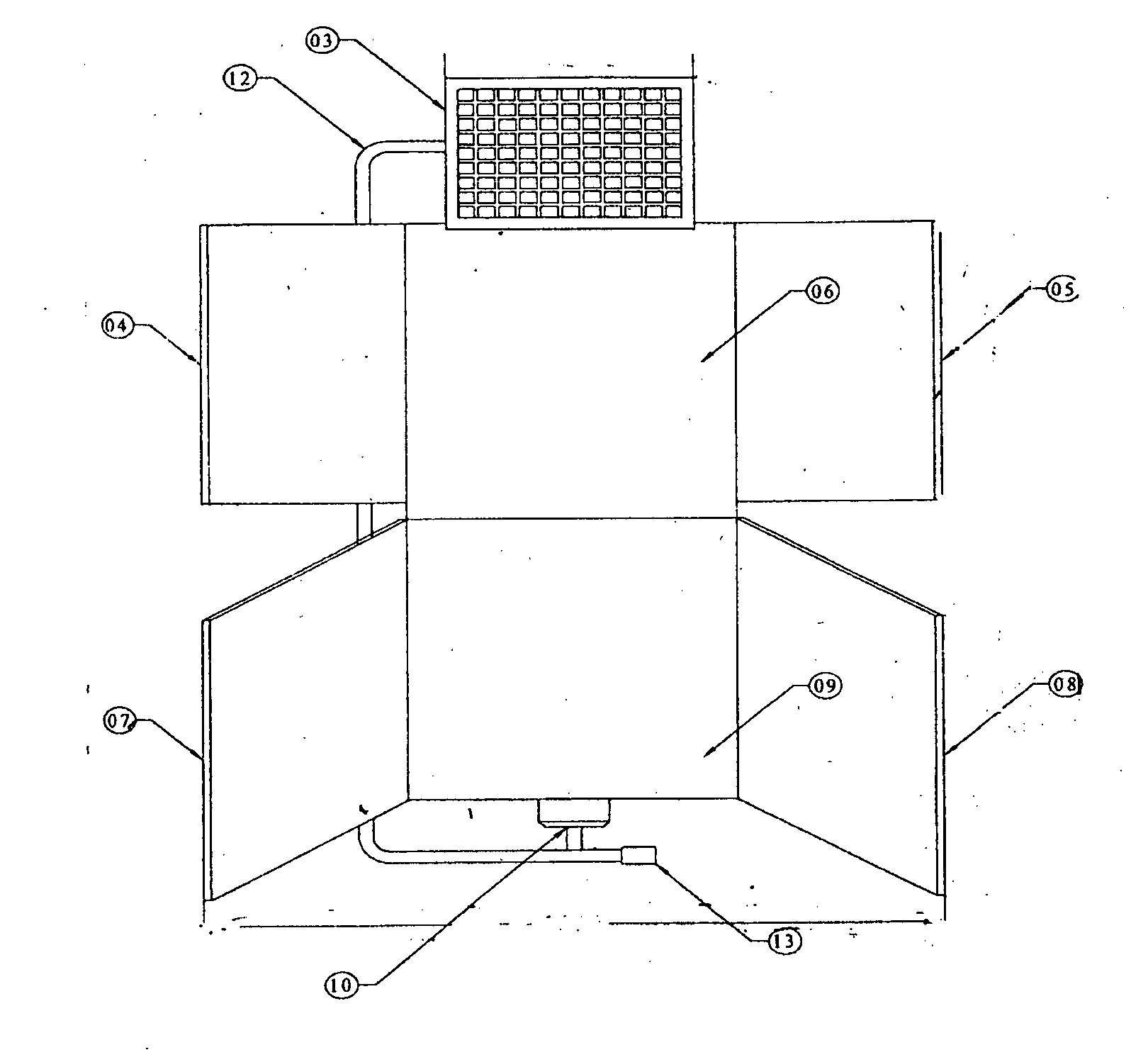Solar dryer with enhanced efficiency of drying
- Summary
- Abstract
- Description
- Claims
- Application Information
AI Technical Summary
Benefits of technology
Problems solved by technology
Method used
Image
Examples
example 1
[0094]The solar dryer of FIGS. 1-7 was taken without any reflectors in one case and with reflectors on the collector side in another case. For measurements made on two typical days in the month of March under almost similar ambient conditions, the drying air temperatures recorded from 11 am to 4.30 pm are tabulated in Table 1.
TABLE 1Drying air temperature profile inside theunit with and without use of reflectorsInsolationWith ReflectorsWithout ReflectorsTime (h)(W m−2)Tco (° C.)Tco (° C.)11:0079697.37611:3086998.881.412:00911101.184.612:3088199.689.313:00881100.886.813:3089310386.114:00917106.584.414:30834104.584.415:00754102.883.515:3068397.783.516:005889180.116:3047285.478.6
[0095]This example teaches us the enhancement in the temperature profile of drying air throughout the day with the use of reflectors on collector side.
example 2
[0096]The dc fans were operated directly using the 10 watt solar PV panel. The following table shows that the speed of the fan in r.p.m, measured by a tachometer depends on the variation of solar intensity for that particular day. Since the powering of the fan is by the solar PV panel, with increase in solar intensity, the power output from the panel increases and this enhances the speed of the fan. The data was collected for a condition when the reflectors on the dryer chamber were absent.
TABLE 2Variation of fan speed with solar intensity and calculatedmass flow rate of air inside the dryer.Time (h)Insolation (W m−2)Fan rpm11:30879307612:00950343412:30974358413:001188545213:30998462214:00831304214:30784294915:00689270815:30630270616:00404266716:303802585
[0097]This example teaches us that during peak insolation, the fan also runs with a very high rpm. This effect is advantageous for the drying process, as it helps to control the temperature inside the drying chamber, such that, at h...
example 3
[0098]The Experiment of Example 2 was repeated on two similar solar dryers. In one case the fan speed was fixed at 2700 rpm whereas in the other case the fan speed varied with solar insolation. The collector outlet temperature, Tco (° C.), is shown as a function of time of day for both cases in the table below.
Tco (° C.) of unitTco (° C.) of unit with fanSolarwith fan havinghaving variable speedinsolationfixed speedsynchronized withTime (h)(W m−2)(2700 RPM)insolation11:309418477.512:0092391.783.212:308589081.913:0087587.281.313:3090581.879.514:0090573.279.114:3077876.580.515:3065968.276.816:0055262.172.3
[0099]The above example teaches us that with a fixed speed fan, Tco varied from 62.1° C. to 90° C., whereas by using a fan connected directly to the PV panel it was better controlled and lay in the range of 72.3° C. to 83.2° C.
PUM
 Login to View More
Login to View More Abstract
Description
Claims
Application Information
 Login to View More
Login to View More - R&D
- Intellectual Property
- Life Sciences
- Materials
- Tech Scout
- Unparalleled Data Quality
- Higher Quality Content
- 60% Fewer Hallucinations
Browse by: Latest US Patents, China's latest patents, Technical Efficacy Thesaurus, Application Domain, Technology Topic, Popular Technical Reports.
© 2025 PatSnap. All rights reserved.Legal|Privacy policy|Modern Slavery Act Transparency Statement|Sitemap|About US| Contact US: help@patsnap.com



